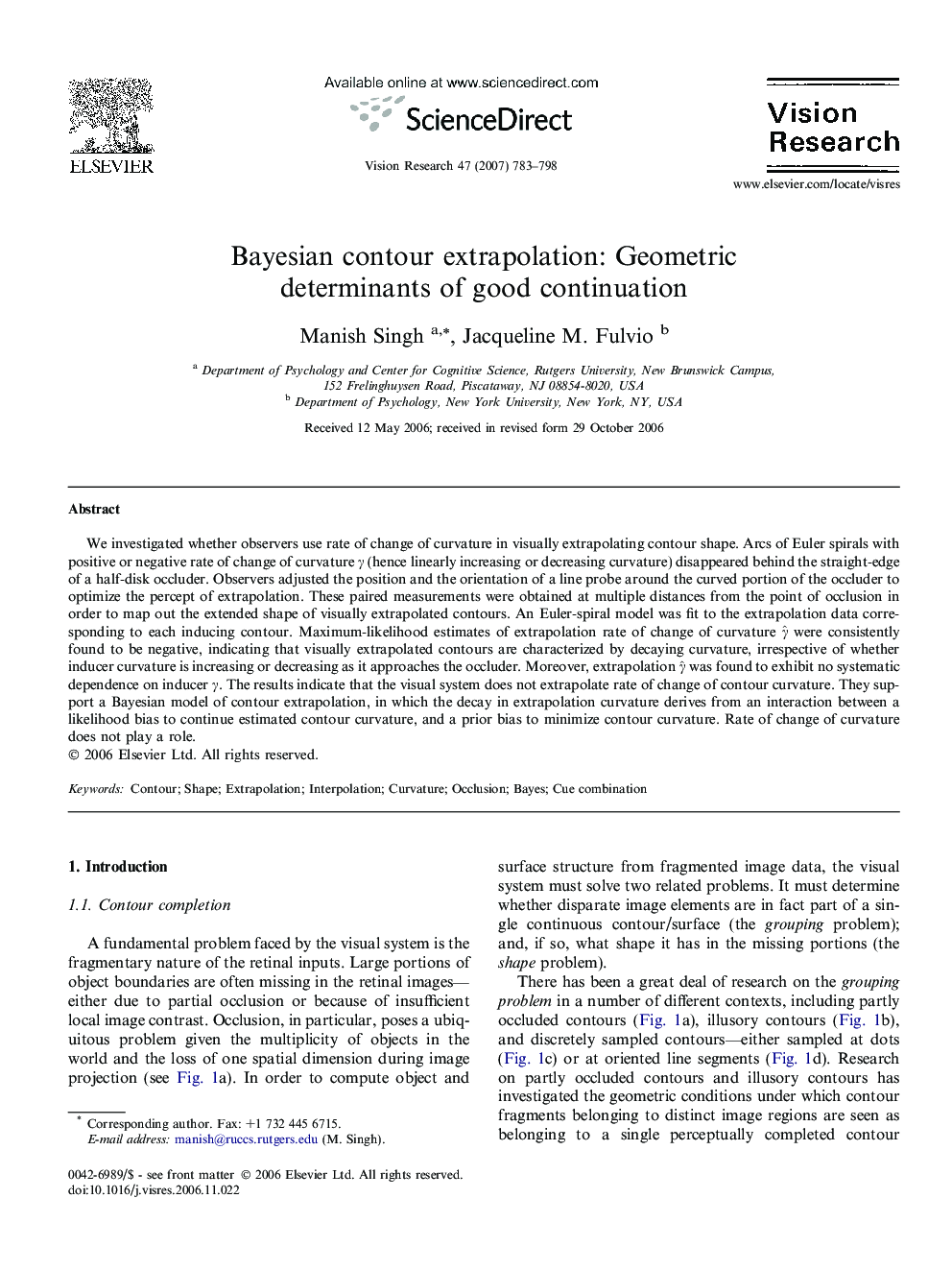| Article ID | Journal | Published Year | Pages | File Type |
|---|---|---|---|---|
| 4035851 | Vision Research | 2007 | 16 Pages |
We investigated whether observers use rate of change of curvature in visually extrapolating contour shape. Arcs of Euler spirals with positive or negative rate of change of curvature γ (hence linearly increasing or decreasing curvature) disappeared behind the straight-edge of a half-disk occluder. Observers adjusted the position and the orientation of a line probe around the curved portion of the occluder to optimize the percept of extrapolation. These paired measurements were obtained at multiple distances from the point of occlusion in order to map out the extended shape of visually extrapolated contours. An Euler-spiral model was fit to the extrapolation data corresponding to each inducing contour. Maximum-likelihood estimates of extrapolation rate of change of curvature γˆ were consistently found to be negative, indicating that visually extrapolated contours are characterized by decaying curvature, irrespective of whether inducer curvature is increasing or decreasing as it approaches the occluder. Moreover, extrapolation γˆ was found to exhibit no systematic dependence on inducer γ. The results indicate that the visual system does not extrapolate rate of change of contour curvature. They support a Bayesian model of contour extrapolation, in which the decay in extrapolation curvature derives from an interaction between a likelihood bias to continue estimated contour curvature, and a prior bias to minimize contour curvature. Rate of change of curvature does not play a role.
